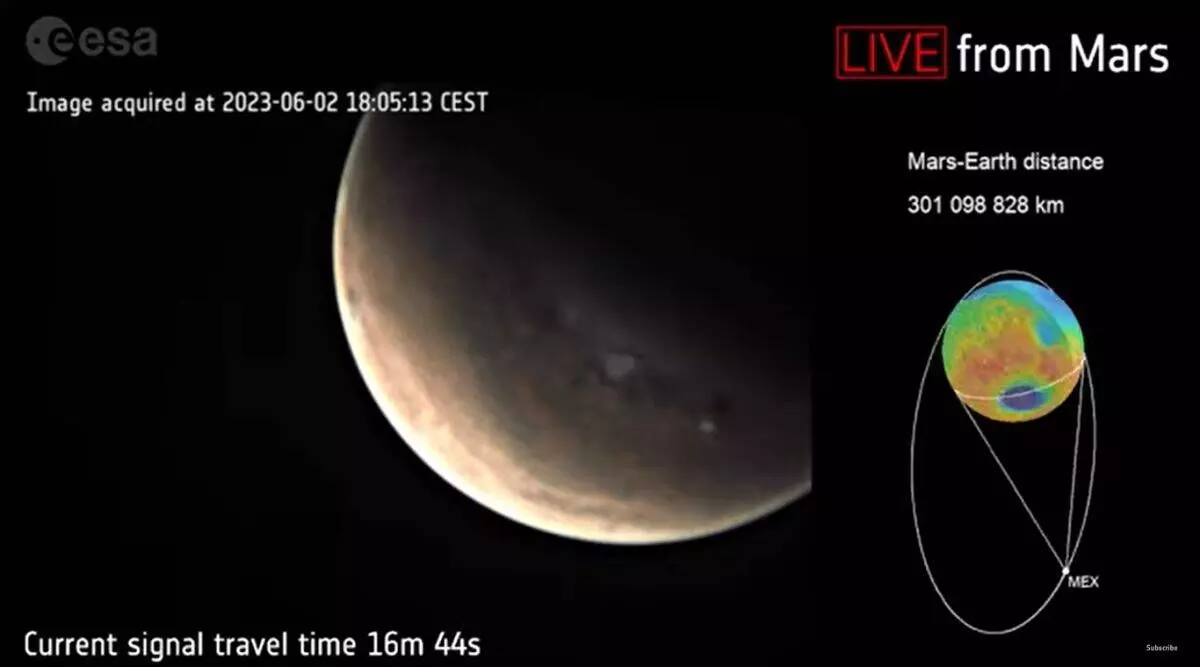
In a first, European Space Agency’s Mars Express live streams images from the red planet
text_fieldsThe European Space Agency (ESA) celebrated the 20th anniversary of the Mars Express spacecraft by broadcasting a live stream of stunning views of the Earth’s neighbour on Friday where it displayed pictures sent by the spacecraft roughly every 50 seconds.
The spacecraft was launched by a Russian rocket in Kazakhstan in 2003.
The historic first-of-its-kind livestream from the red planet, however, was constantly interrupted by rainy weather.
With the relative positions of Earth and Mars yesterday, signals from the spacecraft took around 17 minutes to reach Earth. This meant that the live stream that happened on Friday wasn’t exactly ‘live’.
Nonetheless, this is the first time that a public viewing of near-instant images from Mars was conducted.
“Ooh, here it is, this is the first image from Mars and it is the most live you will ever get unless you travel to the red planet. This is Mars 16 minutes ago,” said a commentator on ESA’s live stream as the first images popped up on the screen shortly after the livestream began at 9.15 PM IST on June 2.
Initial images sent back showed about a third of Mars, which gradually grew bigger in the frame as the spacecraft circled the planet.
In some shots, white clouds can be seen dotting the planet’s atmosphere.
“If you were currently sitting on board Mars Express … this is what you would be seeing,” said Simon Wood, the mission’s spacecraft operations engineer. “We typically don’t normally get images in this way.”
Most of the observations taken by Mars Express are gathered during times when it does not have direct contact with Earth. There are typically two reasons for this to happen—either the spacecraft is on the other side of the Sun or Mars or its antennas are pointed in a direction away from our planet when it’s taking observations.
The Visual Monitoring Camera on the Mars Express captures images of the planet and beams it down to Earth once every couple of days where it is processed by ESA and made publicly available.
This system is perfectly fine for science missions as astronomers can later pore over the data days after it has been captured. But beaming live images back to the planet is a daunting and technically impressive task.
Therefore, there have only been a few historical examples of receiving live images from deep space. The spectacular live videos sent by the Apollo missions and more recently, the DART mission where NASA crashed a spacecraft into the asteroid Dimorphos are great examples.
Mars Express had traveled to the red planet with a lander, dubbed Beagle-2, but the landing craft lost contact with Earth as it attempted to touch down on the Martian surface. More than a decade later, NASA’s Mars Reconnaissance Orbiter captured pictures of Beagle-2. Although it made it to the surface, the lander’s solar panels didn’t fully unfurl.



























